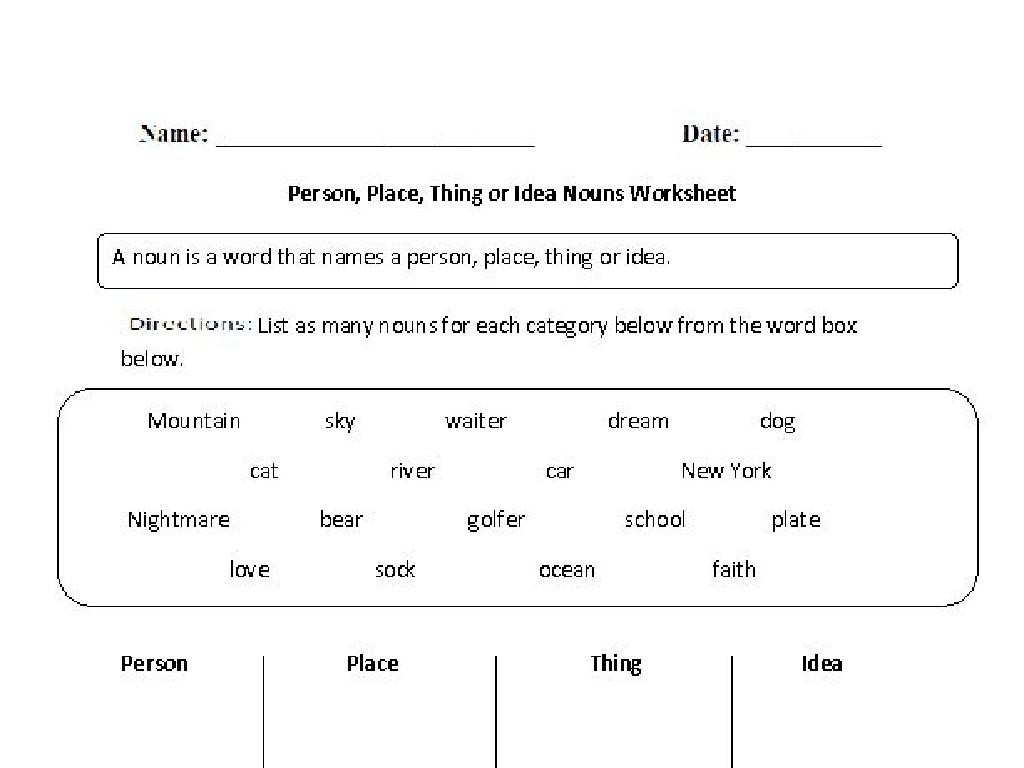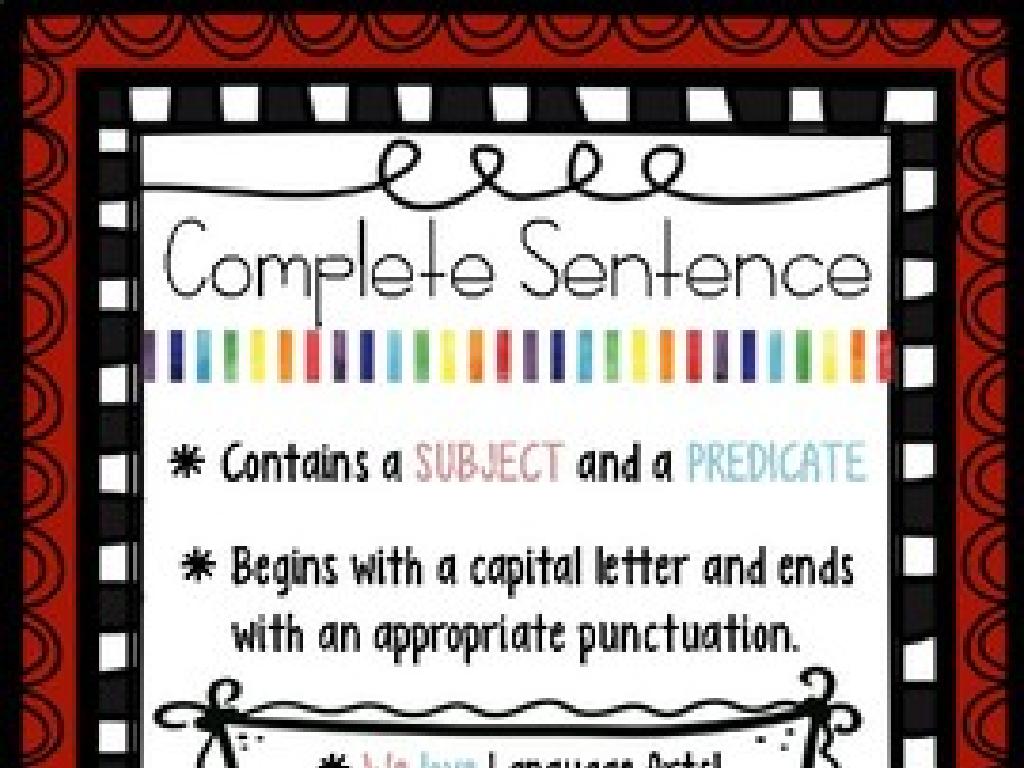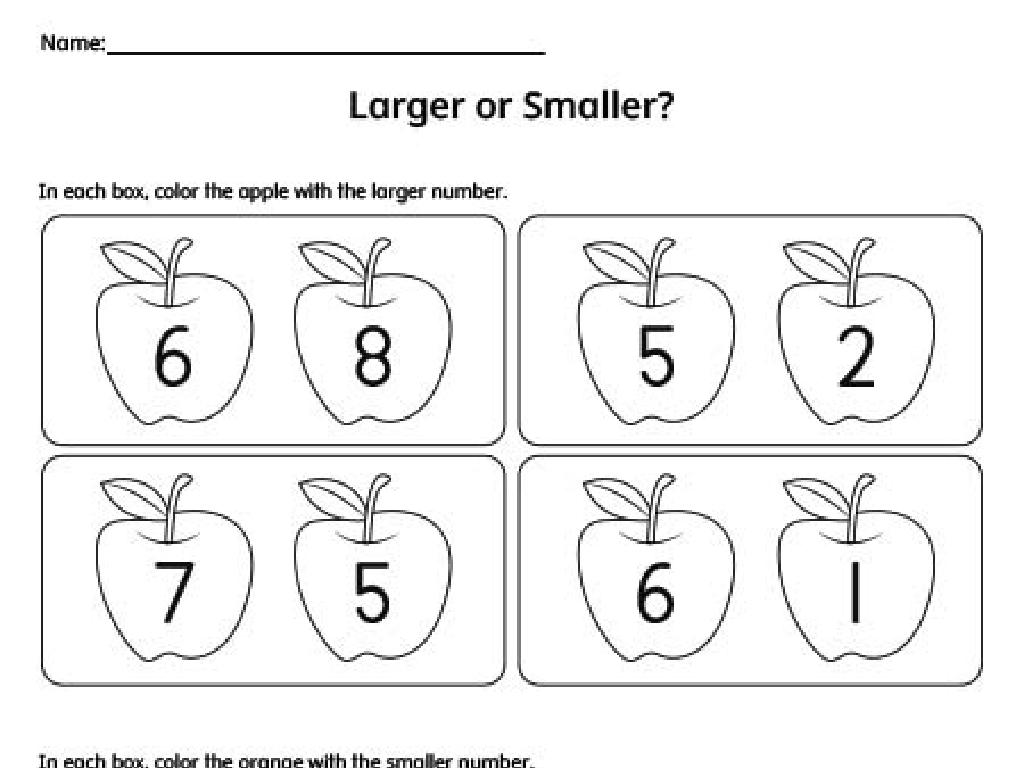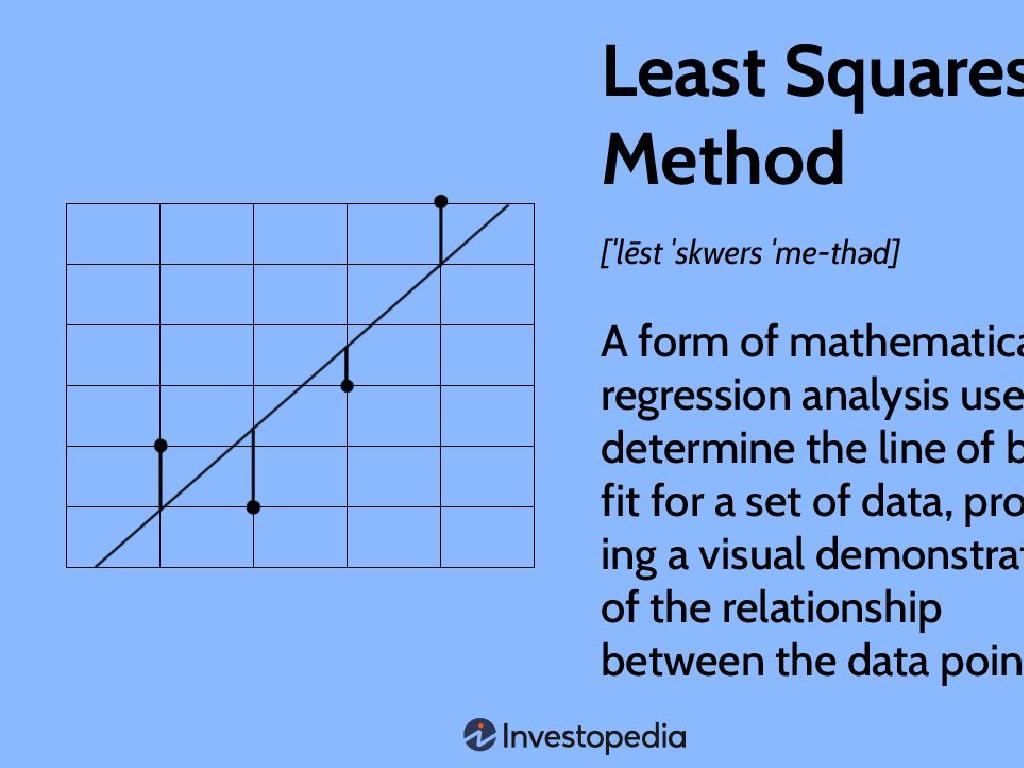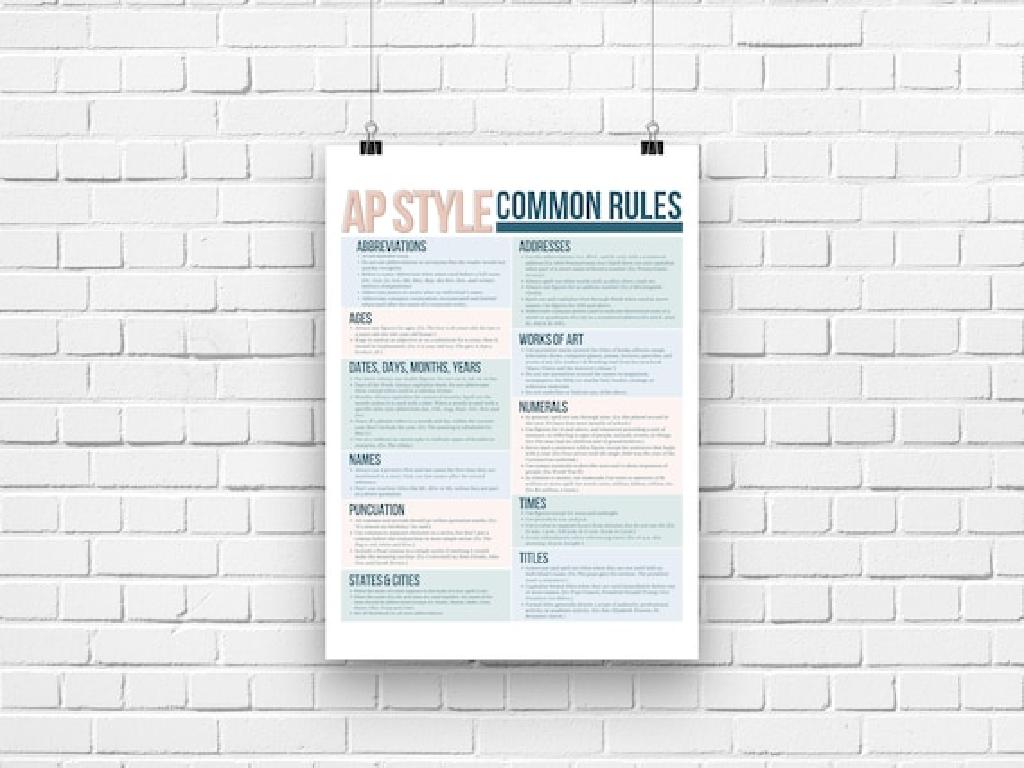Sort Words With Shared Prefixes And Suffixes By Meaning
Subject: Language arts
Grade: Fourth grade
Topic: Prefixes And Suffixes
Please LOG IN to download the presentation. Access is available to registered users only.
View More Content
Exploring Prefixes and Suffixes
– Building blocks of words
– Define prefixes and suffixes
– Prefixes are added to the start, suffixes at the end of words.
– How they alter word meaning
– They can turn ‘happy’ into ‘unhappy’ or ‘happiness’.
– Examples with common prefixes/suffixes
– ‘Un-‘ means not, ‘ness’ turns an adjective into a noun.
|
This slide introduces the concept of prefixes and suffixes, the essential components that modify the meanings of words. Start by explaining that prefixes are added to the beginning of a word and suffixes to the end, each altering the word’s original meaning. Provide examples of common prefixes and suffixes, such as ‘un-‘ meaning ‘not’ and ‘-ness’ which turns adjectives into nouns. Use visual aids or word cards to help students visualize the changes. Encourage students to think of other examples and discuss how the meaning shifts. This foundational understanding will aid in vocabulary development and word comprehension.
Exploring Prefixes
– What is a prefix?
– A set of letters at the start of a word
– Common prefix examples
– ‘un-‘, ‘re-‘, ‘pre-‘, ‘dis-‘ are some we see often
– Prefixes change meanings
– ‘happy’ becomes ‘unhappy’, showing opposites
– Practice with prefixes
|
This slide introduces the concept of prefixes to the students. A prefix is a group of letters placed before the root of a word to alter its meaning. For example, adding ‘un-‘ to ‘happy’ changes the meaning to its opposite. Highlight common prefixes like ‘un-‘, ‘re-‘, ‘pre-‘, and ‘dis-‘ and discuss how they modify the meanings of words they precede. Encourage students to think of other words they know that use these prefixes. As an activity, students can create a list of words using these prefixes and share how the meaning of the base word changes. This will help them understand the power of prefixes in word formation and vocabulary development.
Exploring Suffixes
– Definition of a suffix
– A suffix is a letter group added to a word end
– Common suffix examples
– For instance: ‘-ful’, ‘-less’, ‘-ness’, ‘-ment’
– Suffixes alter word meaning
– ‘Hope’ becomes ‘hopeful’, adding optimism
– Suffixes change word types
– ‘Joy’ (noun) to ‘joyful’ (adjective) shows change
|
This slide introduces the concept of suffixes to the students. Begin by explaining that a suffix is a set of letters that go at the end of a word to change its meaning. Provide common examples of suffixes and show how they can turn a simple word into something more complex. For instance, adding ‘-ful’ to ‘joy’ not only changes the meaning but also turns a noun into an adjective. Encourage students to think of more examples and discuss how the addition of a suffix can alter the word’s function in a sentence. This understanding is crucial for developing their vocabulary and grammar skills.
Sorting Words by Prefixes
– Group words with same prefixes
– Like ‘un-‘ in unhappy, undo, or ‘re-‘ in redo, return
– Discuss prefix impact on meaning
– ‘Un-‘ means not, ‘re-‘ means again, changes word meaning
– Activity: Find prefixes & meanings
– Match words to prefixes, define new words
– Enhance vocabulary skills
|
This slide introduces the concept of prefixes and how they alter the meanings of base words. Start by explaining what prefixes are and provide examples. Group words by common prefixes such as ‘un-‘, ‘re-‘, ‘dis-‘, etc. Discuss with the class how each prefix modifies the meaning of the words it’s attached to. For the activity, students will identify prefixes in a list of words and explain how the prefix changes the word’s meaning. This exercise will help students understand the concept of prefixes and enhance their vocabulary skills. Prepare a list of words with prefixes for the activity and consider creating a worksheet that students can fill out during the exercise.
Sorting Words by Suffixes
– Group words with same suffixes
– Discuss suffix effect on meaning
– For example, ‘joyful’ vs ‘joyless’, suffixes ‘ful’ and ‘less’ change the meaning.
– Suffix changes word’s part of speech
– ‘Careful’ is an adjective, while ‘carefully’ is an adverb, thanks to the suffix ‘ly’.
– Activity: Suffixes and their impact
|
In this slide, students will learn how to sort words based on their suffixes and understand how suffixes affect the meaning and part of speech of a word. Begin by explaining what a suffix is and how it is added to the end of a word. Then, demonstrate with examples how the addition of a suffix can change a word from a noun to an adjective, or an adjective to an adverb, etc. For the activity, provide students with a list of words and ask them to identify the suffix, the original part of speech, and the new part of speech or meaning after the suffix is added. This will help them see the pattern and use of suffixes in language. Possible activities include matching words to their correct suffix groups, creating sentences using words with the same suffix, and a worksheet where students identify suffixes and their effects on words.
Exploring Prefixes and Suffixes
– Prefixes/suffixes alter meaning
– ‘unhappy’ vs ‘happy’ shows how ‘un-‘ changes meaning.
– Compare sentences with/without them
– ‘running’ vs ‘run’ shows how ‘-ing’ affects the word.
– Discuss word changes in sentences
– How does adding ‘re-‘ to ‘build’ change the sentence?
– Understand impact on meaning
– Prefixes/suffixes can reverse or enhance the meaning.
|
This slide aims to help students understand the role of prefixes and suffixes in changing the meanings of words within sentences. Start by explaining that prefixes are added to the beginning of a word and suffixes to the end. Show examples of words with and without these additions and how the meaning shifts. Engage the class in a discussion by asking how specific changes impact the overall sentence meaning. This will help students grasp the concept that prefixes and suffixes are powerful tools for modifying word meanings and can dramatically alter the message of a sentence. Encourage students to think of additional examples and share their thoughts.
Let’s Practice with Prefixes and Suffixes!
– Play a matching game with prefixes/suffixes
– Match each prefix/suffix to its meaning in a fun game
– Complete the worksheet on word creation
– Use given prefixes/suffixes to form new words
– Share your new words with the class
– Present the words you’ve created to your classmates
– Discuss the meanings of new words
– Explain how prefixes/suffixes change word meanings
|
This slide is designed for an interactive class activity. Begin with a matching game where students pair prefixes and suffixes with their meanings, reinforcing their understanding through play. Next, provide a worksheet where students use a list of prefixes and suffixes to create new words, applying what they’ve learned. Encourage students to share their creations with the class, fostering a collaborative learning environment. As they present, discuss how the addition of prefixes and suffixes alters the meanings of the base words. This activity not only solidifies their grasp of the concept but also enhances their vocabulary and public speaking skills.
Class Activity: Word Creation Challenge
– Sort words by prefixes and suffixes
– Look for word beginnings (prefixes) and endings (suffixes)
– Create a poster of sorted words
– Use colors or drawings to make your poster informative and fun
– Include meanings on your poster
– For each word, write what you think it means based on the prefix or suffix
– Present and explain your sorting
– Share why you grouped the words together and what you learned
|
This activity is designed to help students understand and practice sorting words based on their prefixes and suffixes, which are word parts that modify meanings. Divide the class into small groups and provide a list of words. Guide them to identify the prefixes and suffixes and sort the words accordingly. Encourage creativity in the poster-making process, using visuals to represent meanings. When presenting, students should explain the rationale behind their sorting and discuss the meanings of the words. This will reinforce their understanding of how prefixes and suffixes influence word meaning. Possible variations of the activity could include sorting words into categories, finding additional words with the same prefixes or suffixes, or creating sentences using the sorted words.
Wrapping Up: Prefixes and Suffixes
– Review of prefixes and suffixes
– Benefits for spelling and vocabulary
– Homework: Discover 10 new words
– Find 5 words with prefixes and 5 with suffixes from any reading material.
– Write meanings and share next class
– Note each word’s meaning based on the prefix or suffix.
|
As we conclude today’s lesson, remind students of the importance of prefixes and suffixes in understanding the meaning of words and improving their spelling and vocabulary skills. For homework, students should look for words with prefixes and suffixes in their reading books, write them down, and note their meanings. This exercise will help reinforce their learning and prepare them for the next class, where they will share their findings. Encourage them to think about how the prefix or suffix changes the meaning of the root word. Provide examples if necessary to ensure they understand the assignment.

